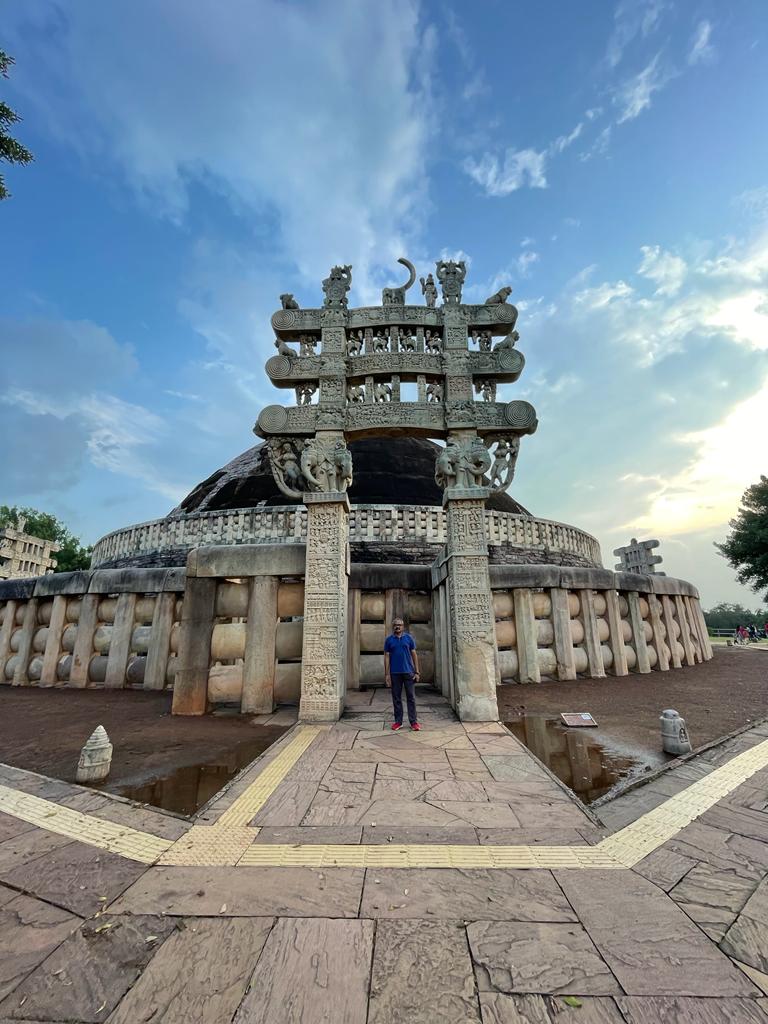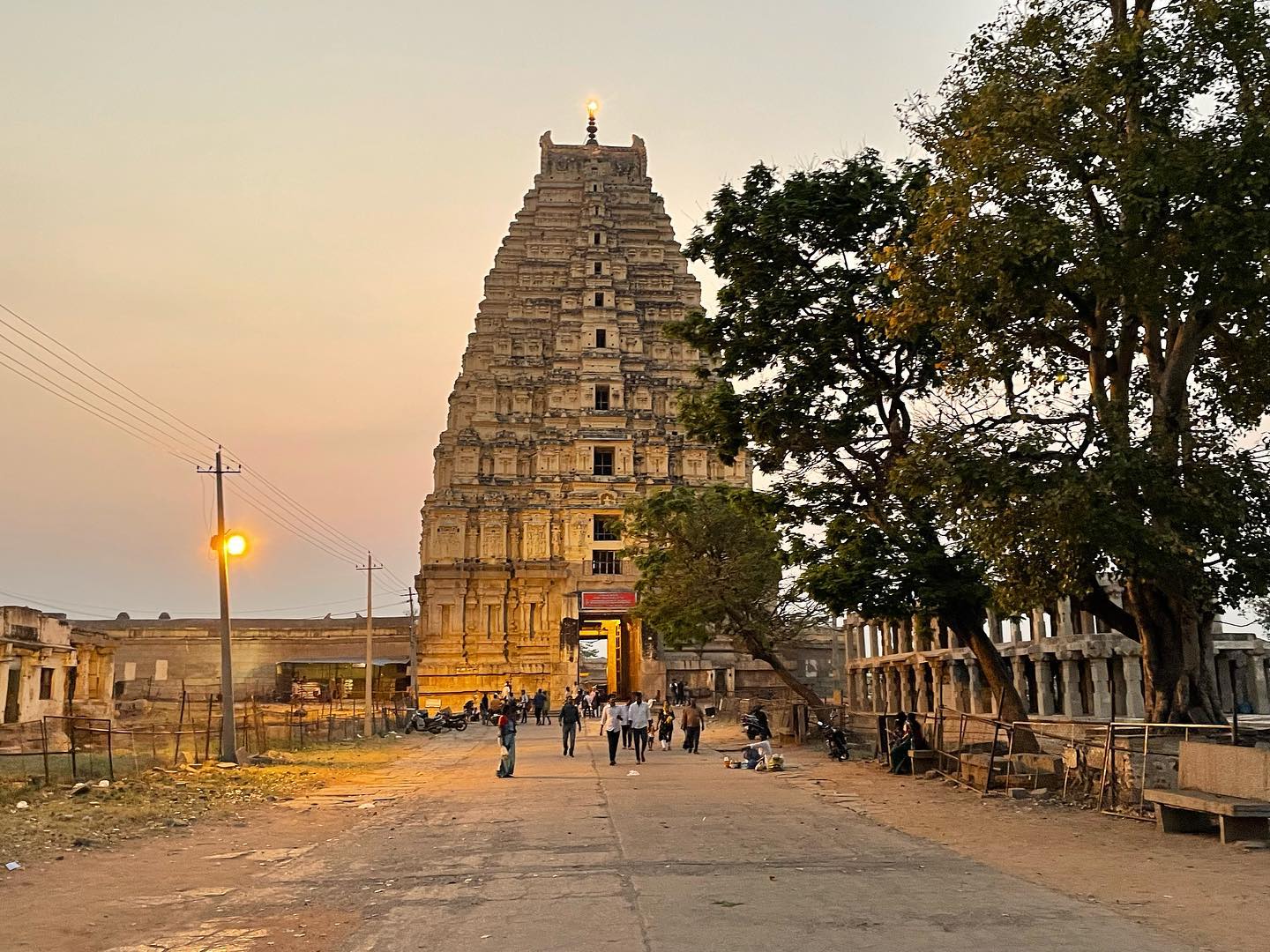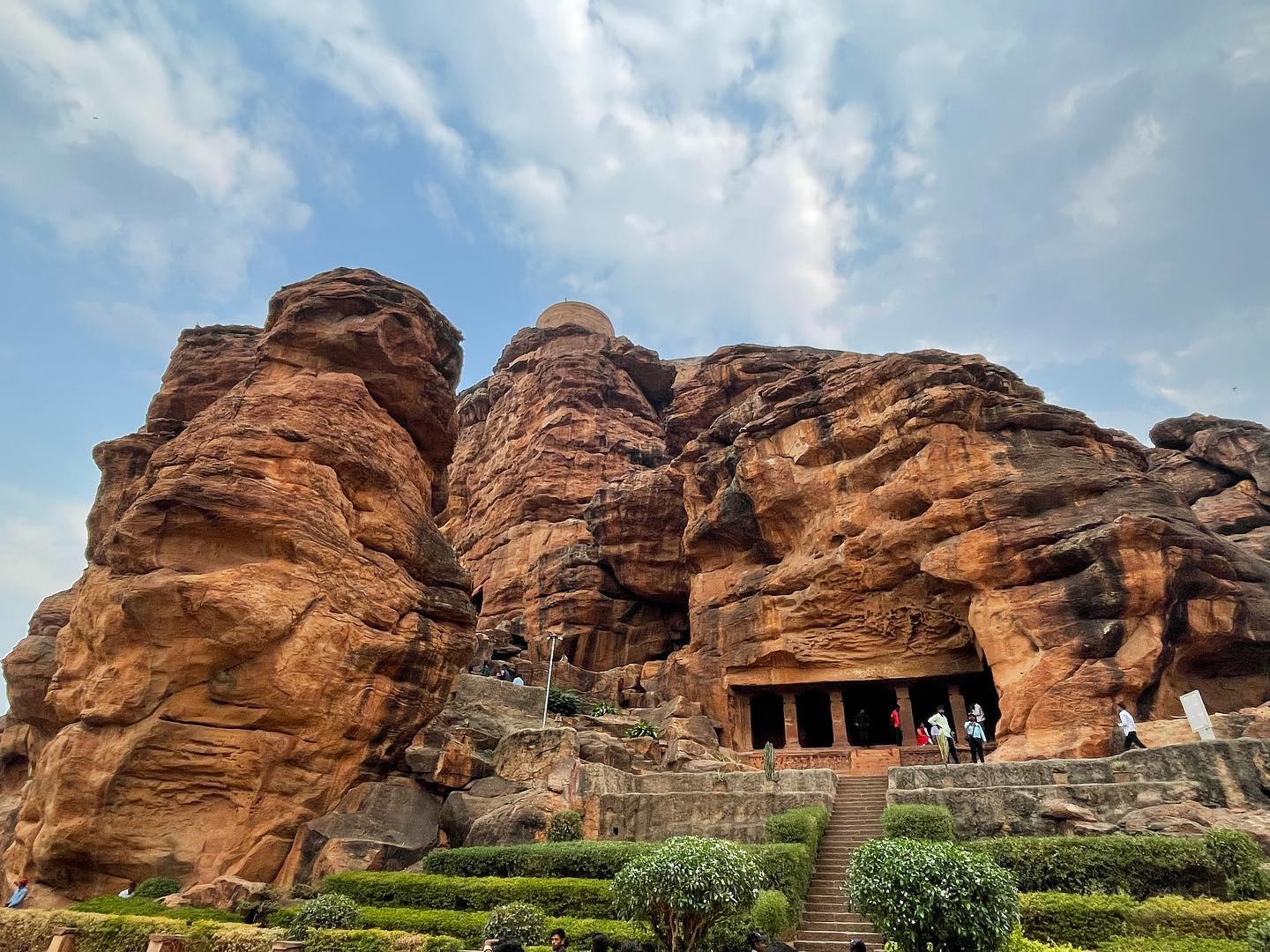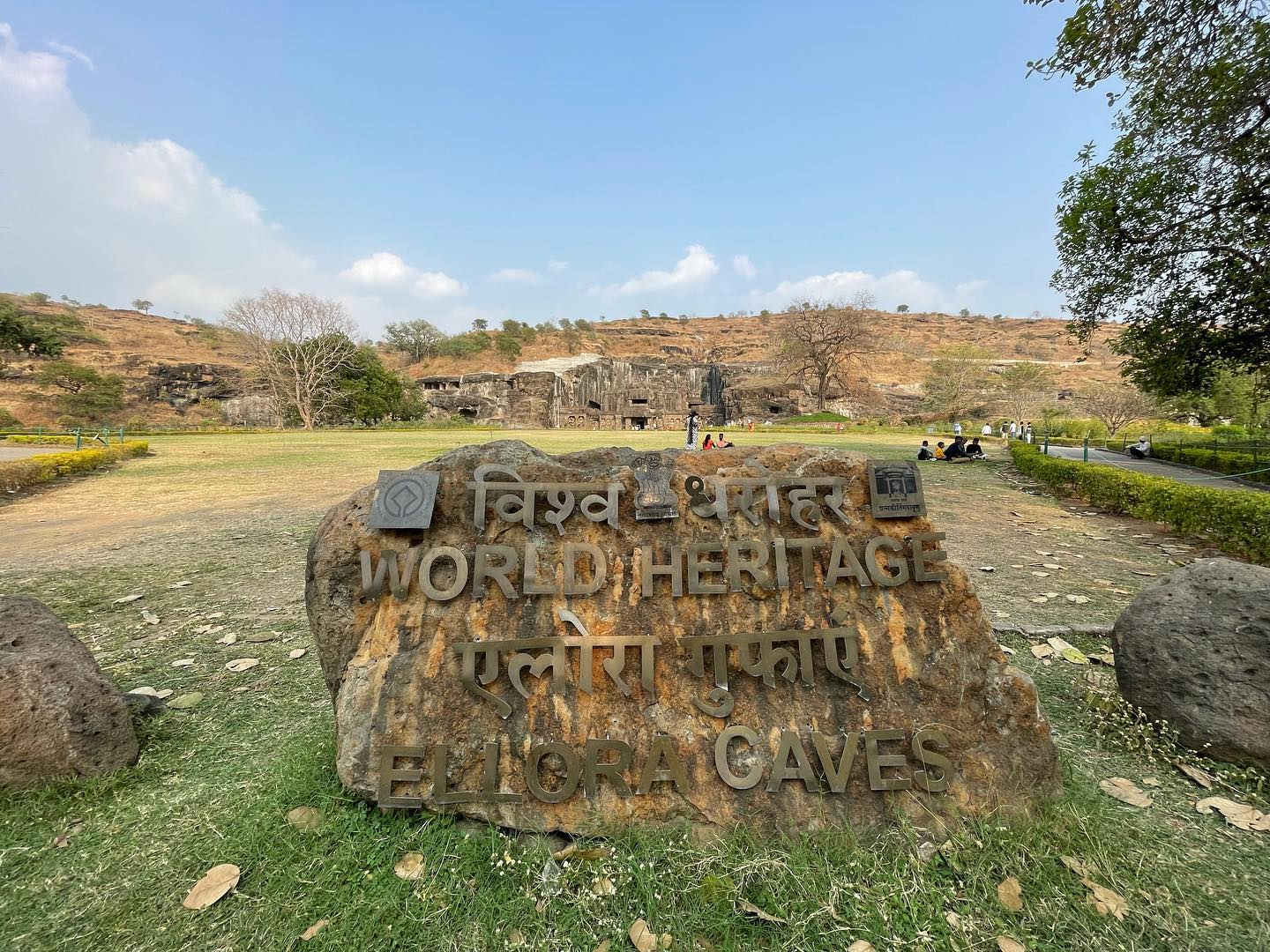17th October, 2021
50 kms from Bhopal is beautiful Sanchi a UNESCO World Heritage site. A group of Buddhist monuments, you will wonder how these structures were built 2000 years ago. Apart from being spiritual centres, you will be marvelled by the engineering feat. These are the largest group of Buddhist monuments of India. You will be surprised to know that it had gone out of sight for around 500 years, and were rediscovered by chance. The great stupa has inspired national monuments and is also depicted on the Indian currency note.
Enroute from Sanchi to Bhopal is one place, that all of us have heard/learnt since primary school i.e the Tropic of Cancer. Feel a part of world geography and get yourself clicked to tell you children/grandchildren that you have been there.
Then you have the Bhimbetka caves around 50 kms away from Bhopal. It has one of the oldest cave temples in the world. Its also a UNESCO World Heritage site. One can see the evolution of mankind neatly depicited on the caves having been painted in vegetable colours. Learn about DIcksonia the oldest animal. And yes, do take the help of a guide to take you around.
Enroute to Bhopal from Jhansi we went to the UNESCO World heritage site of Sanchi.
It was much more than we could have asked for or imagined. Beautifully maintained, having well-manicured lawns, and spread over a vast area, you will find the normal hustle and bustle of a tourist place.
The Sanchi monuments, a series of Buddhist monuments, are nicely nestled on a hill, around 50 kms from Bhopal. These are from the 3rd century to the 12th century, starting with the Mauyra dynasty ( 3rd century BCE ) to the Guptas ( 5th century CE), ending at around the 12th century CE.
In Buddhism, there are 3 basic structures: Chaityas – Prayer Halls, Stupas – A hemispherical structure containing Buddhist relics and Viharas that are dwellings for monks
The oldest and largest monument here is the great Stupa built by King Ashoka (304-232 BCE) in the 3rd century BCE. While it’s unclear why Ashoka chose this specific site for a Buddhist monument, some scholars opine that it could have been the influence of his first wife Devi – who primarily oversaw the construction of the Mahastupa – coupled with the site’s proximity to the rock-cut caves of Udayagiri.
Over a course of 13 centuries expansion kept on taking place and during the second century BC, during the Shunga reign, it was enlarged to twice its size and the mound was covered with sandstone slabs.
Further additions were made during the Gupta period. These include a Buddhist temple and a lion pillar.
The most elaborate additions were made during the Satavahanas, from 1st century BCE to 2nd century AD. Four stone gateways or toranas, were added to the stupa infour cardinal directions. These toranas comprise 2 stone pillars which are surmounted by capitals ( the topmost member of the column),
Surprisingly there is no mention of Sanchi in ancient texts and was , popularly known as Kakanaya, Kakanadabota and Bota-Sriparvata in ancient times,
The site was a thriving religious centre from 3rd to 13th century.
Its decline coincided with the decline of Buddhism in the Indian subcontinent.
Astonishingly, the site vanished from sight, so to say, for around 500 years. People seem to have forgotten about it and ascribe it to the decline of Buddhism in the Indian sub-continent.
The Great Stupa of Sanchi and the complex were actually found quite by chance. While chasing an army of Pindaris ( band of mercenaries), in 1818, General Taylor, found it.
Later, in 1819, Captain Edward Fell published an article on the remains found at a place called Sanchee Kanikhera.
In 1851 the first scientific excavation at Sanchi took place under Major Alexander Cunningham.
Besides the Sanchi site, they also conducted excavations in the surrounding stupas at Sonari, Satdhara, Bhojpur, and Andher and found relics there.
It took seven years of dedicated excavation and restoration by the Archaeological Survey of India (ASI) – under the supervision of Director-General John Marshall between 1912 and 1919 – to make the world realise its true splendour and importance.
The new Rs 200 note introduced in 2017 carries an illustration of the Sanchi Stupa.
The Great Stupa inspired the design of several modern buildings, chief among which is the modern-day Rashtrapati Bhavan.
A Vajrapani pillar, which once stood near the northern gateway, now lies in the Victoria and Albert Museum, London. A damaged torso of a yakshini (a mythical being in Buddhist, Hindu and Jain lore) is preserved at the Museum of Fine Arts, Boston.
Temple 17
Within the group of monuments is Temple 17, an important landmark. It is one of first structures on the basis of which Hindu temples are built.
Most scholars agree that it was for Buddhist worship. Temple building was not very popular during the Buddhist phase, but many elements of this was incorporated in Hindu temple architecture.

It has a square, flat roofed sanctum with a porch that has four pillars in the front. Interior and Exterior are simple, but the pillars are carved, that supports the roof that is carved with lions.
Tropic of Cancer
MR Chatterjee Junior was missed in Gujarat Trip.
These are the first letters of the state through with the Tropic of Cancer passes. Do put it together.
The Tropics of Cancer and Capricorn were delineated because they are places in the hemisphere where the sun would be directly overhead. For ancient travellers who followed stars, these were crucial.
The Tropic of Cancer (23° 30’N) divides the country into almost two equal parts.





















